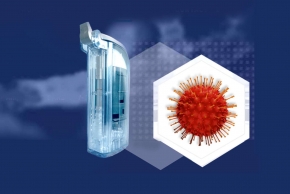ENS Paris-Saclay, spearheading SARS-CoV-2 detection
An innovative and reliable test
In the midst of the Covid-19 pandemic, the ENS Paris-Saclay keeps distinguishing itself with significant scientific contributions. Thanks to innovative methods, the researchers from the Biology and Applied Pharmacology Laboratory (CNRS-ENS Paris-Saclay) have developed a revolutionary test combining RT-LAMP (reverse transcription loop-mediated isothermal amplification) and immunochromatography. Not only is this text more reliable and accurate, it is also unprecedented in its ease of use.
Universality and safety
The testing device is designed to be extremely practical for laboratory technicians, allowing for the simultaneous testing of up to 96 samples. It can be used manually with standard lab equipment or automatized with a pipetting robot. The testing kit designed by the ENS Paris-Saclay is universally compatible with all sampling systems, eliminating compatibility issues between sample collection and analysis. Each chemical reaction happens in a single-use compartment to minimize risks of contamination or false positives. Positive and negative tests are included in the kit to ensure reliability.
Superior performance and validation
Rigorous pre-evaluation protocols were conducted at Bichat Claude Bernard AP-HP Hospital by their “Infectious Agents and Hospital Hygiene” department. Results obtained from collected samples were compared to the RT-qPCR reference method, and proved remarkably accurate, surpassing antigen tests on that front. The overwhelming majority of samples showed the same results whether tested via RT-qPCR or ApliFlow®SARS-CoV-2.
Ability to detect variants
The test also proved impressively accurate in the detection of the near-5000 known variants of SARS-CoV-2, while ignoring other coronaviruses such as SARS, MERS or HCoV-229E. This specificity proves the accuracy and efficacy of the test.
Future Developments
A clinical study of greater magnitude is currently underway to confirm these promising results. Furthermore, a new version of the test using saliva samples is being evaluated and could be available soon, offering an even more accessible and practical alternative.

You also, comment on this article